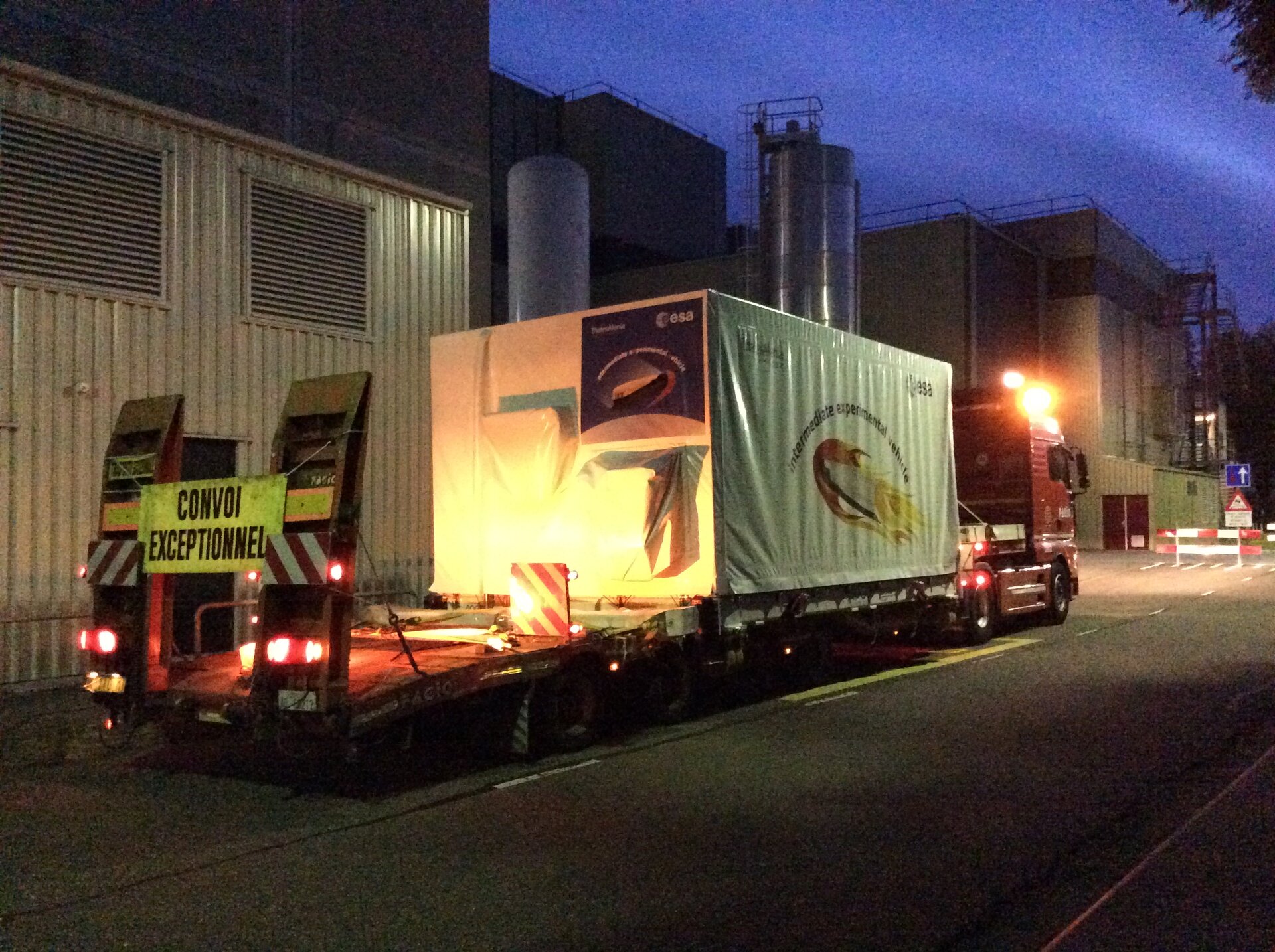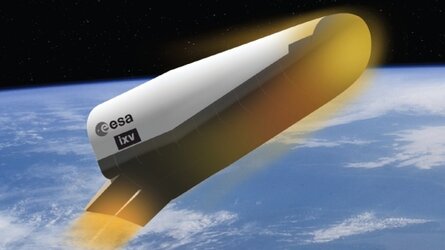Experimental spaceplane unboxed for final tests
The Intermediate eXperimental Vehicle arrived in the Netherlands last night to undergo final tests at ESA’s main technical centre ahead of its November launch.
These tests at ESA’s Technical Centre in Noordwijk, the Netherlands, aim to confirm that IXV can withstand the demanding conditions of launch. The first batch, starting on 11 July for three weeks, sees IXV bolted to a ‘shaker table’ to experience the heavy vibrations of launch.
Three days of ‘separation shock’ testing follows, mimicking the moment the craft separates from the Vega rocket. At an altitude of 320 km, a pyrotechnic device will fire to open a clamp band for springs to push IXV away from the upper stage. Mission planners must be sure that it can withstand the mechanical shock of the pyrotechnic detonation.
Next, inside the Large European Acoustic Facility for six days, IXV will experience the deafening roar of a rocket ascent. Finally, 11 days will be devoted to checking that all of the onboard subsystems work after enduring the tests.
IXV must withstand the extremes of both space and atmosphere on its journey into space and back, requiring extensive testing for almost all of its technologies. Space is a vacuum but IXV must also withstand the searing heat of reentry.
In parallel to the testing in the Netherlands, other efforts are progressing to prepare for the suborbital flight, including the launch campaign in Europe’s Spaceport in Kourou, French Guiana, the ground network and recovery operations.
In early September, IXV will be shipped to Kourou for launch in the first half of November.















 Germany
Germany
 Austria
Austria
 Belgium
Belgium
 Denmark
Denmark
 Spain
Spain
 Estonia
Estonia
 Finland
Finland
 France
France
 Greece
Greece
 Hungary
Hungary
 Ireland
Ireland
 Italy
Italy
 Luxembourg
Luxembourg
 Norway
Norway
 The Netherlands
The Netherlands
 Poland
Poland
 Portugal
Portugal
 Czechia
Czechia
 Romania
Romania
 United Kingdom
United Kingdom
 Slovenia
Slovenia
 Sweden
Sweden
 Switzerland
Switzerland





























